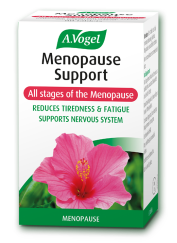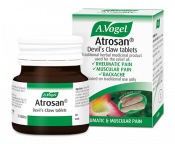The structure of muscles and joints
So here goes…
Joint pain is such a common menopause symptom, and yet most of us aren’t aware of the structure of our joints and just know that they hurt or don’t hurt, as the case may be. So here’s a quick round-up of the important parts.
Muscles are bundles of fibrous tissue that contract and release to pull bones in the directions we require them to go.
Tendons connect muscles to the bones so that they can haul them around.
Ligaments connect bones to other bones, so that when one is pulled, another can also come along for the ride.
How can the menopause cause joints and muscles to hurt?
Falling oestrogen levels can affect the hydration of the joints, ligaments and tendons and this in turn can affect the joints in several ways. It can cause:
- Joint pain and inflammation.
- Joint stiffness and loss of range of movement – sometimes this is most obvious when you get up and this eases as you start to move about.
- Creaking joints when you bend your knees or flex your fingers.
- Change of posture – this is really quite an important point and often ignored! If your joints, ligaments and tendons are affected this can alter your whole posture, pulling on your muscles and causing both joint and muscle aches at the same time. This can happen to any group of muscles but mainly the back, shoulders and hips. Muscle changes in the shoulders can also trigger tension headaches or migraines. There is also the theory that strained muscles in the back or change of spinal alignment could lead to hot flushes, so if both of these symptoms started around the same time they may be connected!
- Change of posture in the neck and shoulders may affect the support of the breast muscles too, causing breast ache.
- Falling oestrogen levels can contribute to weight gain in some women and this in turn will put more pressure on the joints.
- Falling oestrogen levels can affect bone density, causing osteoporosis which will affect posture as well.
- Hot flushes and night sweats can dehydrate you really quickly, so this could be a major contributory factor to your joint pain!
Any of the joints can be affected with this, from little joints such as fingers and toes right up to the major joints such as the hips.
Why is magnesium important?
Falling oestrogen can also affect the uptake and utilisation of magnesium; and magnesium is vital for proper muscle function. So low magnesium can cause:
- Muscle aches and pains.
- Muscle fatigue, which makes it more difficult to exercise as your muscles will start to ache more quickly.
- Muscle cramps.
- And remember – low magnesium can also affect your mood and sleep pattern and also be a contributory factor in stress palpitations and sugar cravings!
So what can you do to help in this situation?
1. Water!! Dehydration is so common these days, so drinking plenty of plain water is vital for so many menopause issues including keeping the joints well hydrated. It is really amazing how many women have got back to me saying that drinking more water has reduced their symptoms really quickly! Also, at this time of the year when it is hot are you upping your water intake to compensate?
If your joints are sore or creaky first thing then ease off as they day goes on, it may mean that you are really dehydrated during the night, so make sure that you have a small glass of plain water about an hour before bed – this is really important if you are getting night sweats as these will dehydrate you further.
2. Although joint/muscle aches tend to put you off exercise this is really important for several reasons. Firstly: exercise will strengthen the muscles that support the joints making symptoms less likely. Secondly: exercise will help to control your weight. The best types of exercise to do if your joints or muscles are sore are yoga, swimming and (depending on which joints are affected) cycling.
3. Check your diet – caffeine, fizzy drinks, citrus fruits, members of the Deadly Nightshade family (potatoes, tomatoes, aubergines and peppers), high salt and sugar foods can all trigger inflammation in the joints and sometimes just cutting these out can make a huge difference.
4. Try anti-inflammatory herbs such as Devil’s Claw. This tends to work quickly on relieving pain all over the body. For the small joints you could apply Arnica Gel topically.
5. Take a magnesium supplement to help with muscle aches and cramps. A liquid one would be best but you could also take a magnesium citrate capsule or use a magnesium skin spray on the affected muscles. Make sure that your diet is high in magnesium-rich foods such as nuts, seeds, dried fruits and dark green leafy veg.
6. I would recommend getting a check up with a Chiropractor or Osteopath, as they can detect if any joints are out of line and also recommend exercises to help.
7. The Alexander Technique can teach you how to hold your posture correctly and can be very effective at alleviating joint pain.
8. If you have back/shoulder ache along with sore breasts, get measured professionally – most big department stores offer a free service. (I went to get measured a while ago and was horrified to find that I was way out in my bra size and I now go once a year. A proper fitting bra also makes you look so much better and slimmer!)
During the menopause breast tissue, density and shape can change quite dramatically and a poor fitting bra –especially if you wear under-wired ones – can cause both backache and sore breasts. However, it is very important to get any breast changes checked out by your doctor as well!
Do you suffer from aches and pains but didn’t realise the menopause could be causing it?








